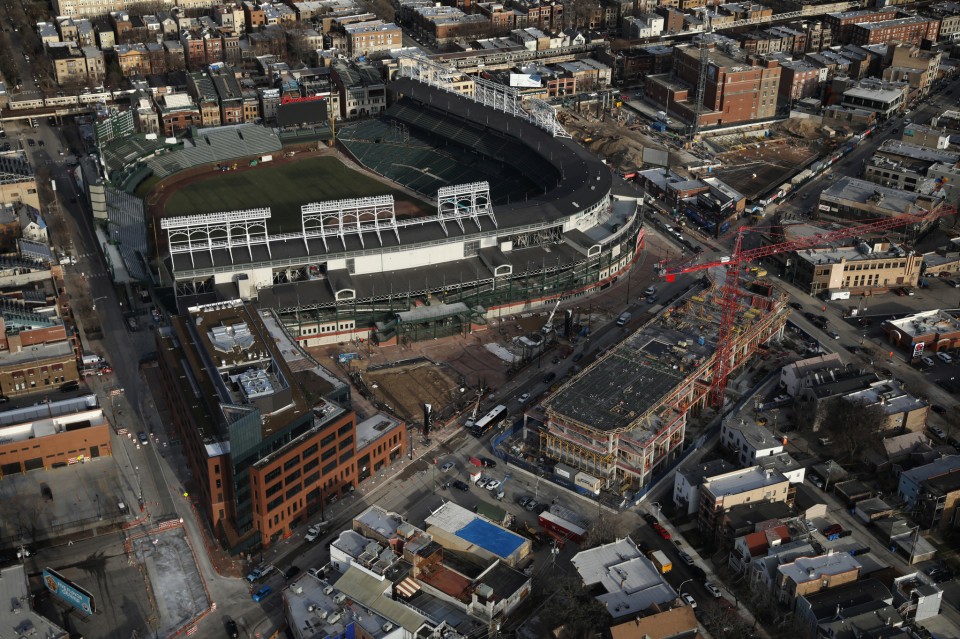
Sep 25, 2017
Tim Novak | Chicago Sun-Times| September 25, 2017
Welcome to Wrigleyville: Home of the world champion Cubs — and some of Chicago’s best deals on property taxes.
Take Casey Moran’s, one of the most popular bars in the booming neighborhood.
Two years ago, Cook County Assessor Joseph Berrios reclassified Casey Moran’s from commercial to residential property after its owner, Kevin Killerman, created a tiny apartment above the bar. That drastically cut Killerman’s property taxes by 60 percent, saving him more than $110,000 so far.
A block away, Berrios similarly has classified a two-story bar called Trace as residential property, even though a bartender there says there aren’t any apartments on the property. That’s saved its owners more than $17,000 in property taxes this year.
And the Ricketts family, owners of the Cubs and Wrigley Field, have saved hundreds of thousands of dollars in taxes on 10 apartment buildings known as Wrigley Rooftops. All are classified as residential property — even though their rooftop bleacher businesses generate far more revenue than their residences, records show.
Around Wrigley Field, bars and restaurants compete for customers. But when it comes to property taxes, they operate on an uneven playing field, a Chicago Sun-Times investigation has found.
Cook County is the only county in Illinois that taxes residences less than commercial property. That tax break is extended to thousands of buildings that include both businesses and apartments, resulting in lower tax bills for their owners — while forcing the rest of the county’s taxpayers to pay more.
CONTINUE READING

Jul 20, 2016
The food and dining scene in New York City is constantly flourishing with new, hip restaurants taking center stage. Most recently, it has been common to see one of these restaurants in the corner of a hotel or within a mixed-use property. Take the Michelin-starred Breslin Bar and Dining Room, the newest brainchild of Chef April Bloomfield and restaurateur Ken Friedman, which is located at the Ace Hotel in Midtown Manhattan, along with John Dory Oyster Bar, Stumptown Coffee Roasters, No. 7 Sub and a number of retail clothing stores.

As part of a mixed-use property, restaurant owners are housing their bread and butter alongside a variety of residential, commercial and retail neighbors. An efficient and beneficial way to serve your marketing and business needs, opening up shop within such a property allows you to feed off other businesses surrounding you. Of course, it’s not all fun and games when sharing space with others. You may face some stumps and hurdles, and must consider whether this is the right move for you and your restaurant.
This may be your first gig where you are considering all options when selecting the ideal location for your restaurant. Or, you may already own a freestanding restaurant and are looking to open your next branch. In either case, you must understand the key differences between the two differing opportunities, and what they have to offer you.
The primary benefits of a location within a mixed-use property are twofold: 1) support from being part of a development community and 2) traffic from surrounding businesses and tenants with similar interests.
Newer mixed-use developments usually are more code-compliant and have better facilities. The space is typically built from the ground up and so has been constructed with specific purposes in mind from the get-go. The landlord wants to see your restaurant succeed and may offer leasing incentives.
Being part of a community of facilities can reap great benefits, in terms of branding and exposure, especially if you are located on the grounds of a well-known hotel. In this case, although the space may be more expensive, your success may lead you to future opportunities with the hotel if it opens other locations in the city or abroad. Just as they can help enhance your reputation, your success gives them more exposure, too, and similarly aids in their success. Similarly, other tenants, whether they are other restaurants or retailers, can help your business flourish, while simultaneously you help theirs. In the best cases all businesses located within such a property share a synergy and economies of scale.

Anyone considering opening a restaurant in a mixed-use property must also examine the legal realities to negotiate the best deal. It’s important to research the types of businesses that will be part of the project, especially if it involves a hotel. Often restaurants located within a hotel are responsible for providing breakfast and roomservice, for example.
It’s also crucial to examine the lease or contract to see if they are part of a net lease that usually includes Common Area Maintenance (CAM) charges. The operator should also consider the complicated interplay among the hotel, offices, residential and restaurant, including common areas, shared responsibility and costs, the insurance landscape, maintenance, tax escalations, union rules and service level agreement issues.
When considering the best space for your new restaurant, it’s all about location, location, location. So make sure when you do decide to mix, you mix well.
Bruce Bronster is a real estate and hospitality partner at Windels Marx Lane & Mittendorf, a New York-based law firm. He focuses on hospitality and restaurants, commercial disputes, tax lien and mortgage foreclosures, and provides general business advice.
(H/T restaurant-hospitality.com)




